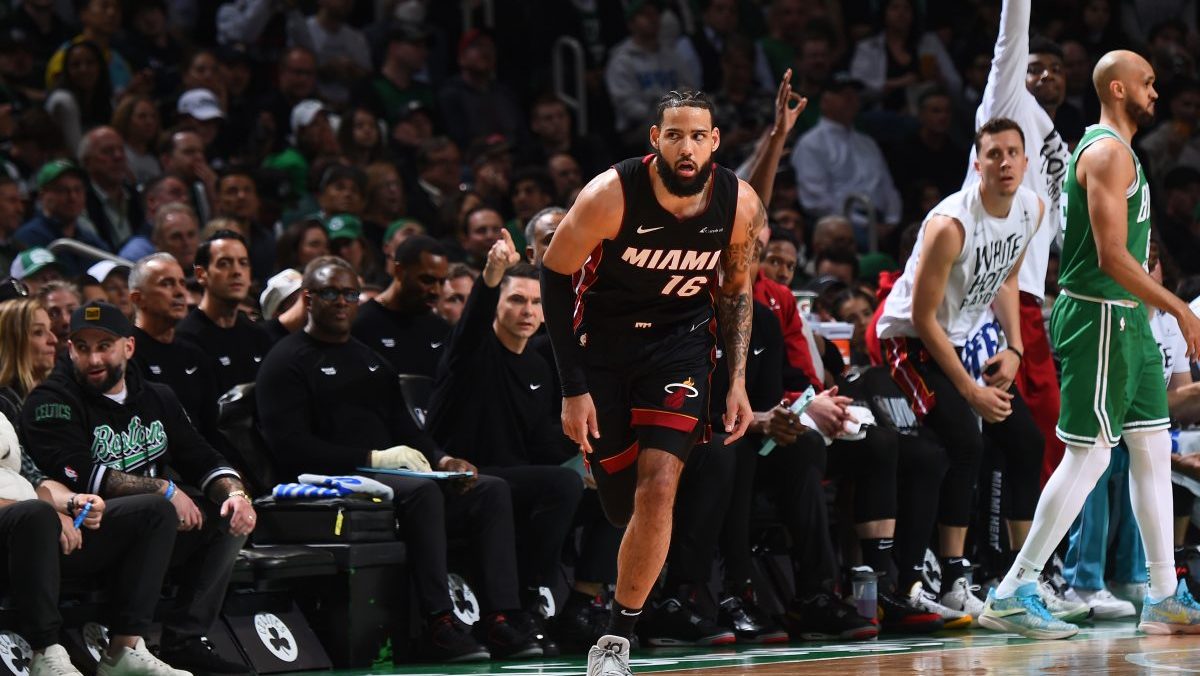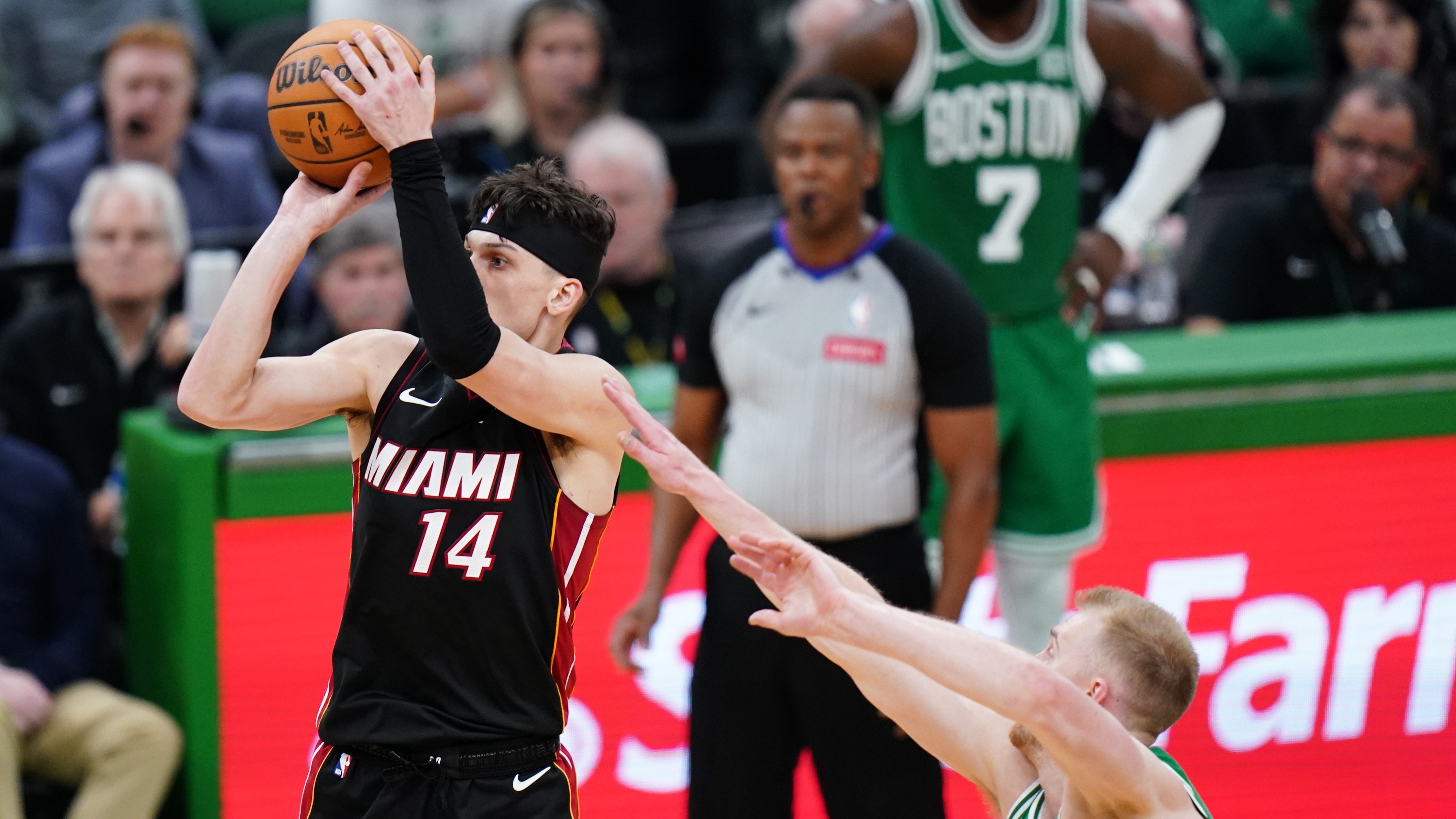
By A. Sherrod Blakely
CSNNE.com Celtics Insider
Follow @sherrodbcsn
SPRINGFIELD, MA. For Tom Sanders, life in the NBA has never been about numbers, unless you're talking about championships.
He was a key cog in Boston's NBA reign in the 1960s, but his greatest impact had little to do with points - and everything to do with people.
Sanders played an integral role in the establishment of the several NBA programs that would go on to help rookies deal with the various challenges they would face as professional players on and off the court; programs that would go on to help shape similar transition programs in other professional sports leagues.
For years, Sanders' efforts went unnoticed.
Not anymore.
Sanders was among the 10 individuals chosen as members of the 2011 Naismith Basketball Hall of Fame class. Sanders enters the Hall of Fame as a contributor, which was voted on by the veteran's committee.
"He has been an enormous asset to the NBA," said Celtics great Bill Russell, during a video tribute to Sanders. Satch understoodto lead, is to serve."
Boston Celtics
Joining Sanders in the 2011 Hall of Fame class were former NBA players Dennis Rodman, Artis Gilmore, Arvydas Sabonis and Chris Mullin along with four-time NCAA women's coach of the year Tara VanDerveer, four-time Olympic gold medalist Teresa Edwards, all-time NCAA wins leader at Philadelphia University and former Boston Celtics draft pick (1963, No. 62 overall pick) Herb Magee, coaching legend Tex Winter and former Harlem Globetrotter Reece "Goose" Tatum who was honored posthumously.
And in typical Sanders style, his opening remarks during his acceptance speech began with congratulating the other nine members of the Hall of Fame class.
"The quintessential team member was Tom Sanders, who had a very selfless role as a player," said Sanders' former Celtics teammate Tommy Heinsohn, Hall of Fame class of 1986 who was chosen by Sanders as his presenter. "He (Sanders) was a guy, I termed him the second best defender on a very good defensive team next to Bill Russell. But he was never recognized in the league for that."
A 13-year NBA veteran, Sanders was part of eight championship teams in Boston.
Only former teammates Bill Russell (11) and Sam Jones (10) can boast more championship bling-bling than Sanders.
And while Russell and Jones' contributions were clearly seen, the role that Sanders played in the Celtics' success often went overlooked by those not donning the Green and White.
"Oh, we knew how valuable he was," Heinsohn said. "When you have all that talent like we did, you don't win unless guys accept their roles. Satch had a role, and he played that role to the best of his ability every night. He meant as much to our success as guys like (Bill) Russell, like Sam Jones, myself. "
At 6-foot-6, Sanders was the Celtics' top perimeter defender, drawing such daunting defensive assignments such as guarding Oscar Robertson or Elgin Baylor.
Sanders said it was former New York Knick forward Mel Hutchins and former Celtic Bill Sharman who made him "really begin to think about playing serious defense."
"He (Hutchins) was so smooth defensively, always in the right place," Sanders told CSNNE.com moments after delivering his acceptance speech. "I thought to myself, 'I sure hope one day I can play like that.'"
Sanders would have days - years, actually - where his defense would be one of the keys to Boston's run atop the NBA.
So while much of the attention back then was paid to the Celtics' bevvy of dynamic players, Sanders' defense was also an important part of the C's championship ways.
But Sanders could score, despite averaging just 9.6 points per game in 916 NBA games.
When the Boston Celtics drafted Sanders with the eighth overall pick in 1960, Sanders knew it would be difficult to score like he did at NYU where he finished his career as the team's all-time second leading scorer.
"I would have liked to have been a scorer, a star and all those kind of things," Sanders said. "But the reality was I had to find a way to fit."
And the best way to fit, was to simply do something that addresses a specific need, like defending at a high level.
"The reality was I had to find a way to make that team," Sanders said. "To make that team, I had to fit that particular role."
The Celtics were already an established NBA power at the time.
Sanders didn't want to do anything to disrupt that.
"One thing I didn't want to do was become the guy that was drafted and that was there, and not have them win," Sanders told CSNNE.com recently. "That was a heck of a burden. And then we kept on winning, and the burden is now on the shoulders of some other rookie's shoulder that comes in."
With the Celtics continuing to dominate the NBA landscape, Sanders steadily grew into more and more of a leadership role.
But as he grew older, wisdom set in.
And as that wisdom led him to look forward to a post-basketball life, it actually brought him back to where his NBA hoops dreams became reality.
A transition program for incoming rookies was unprecedented, and paved the way for other programs to follow that benefit players.
The fruits of that labor can be seen throughout the NBA now, with a number of players like Chauncey Billups recognizing just how valuable Sanders' contributions have been to the game of basketball.
"It's a long time coming," Billups told CSNNE.com. "Everybody knows what he means. He came into league, was active, tried to give these younger guys a voice in what's going on. He's done so many great things beyond the game.
Billups added, "I can only imagine how alone I would have felt and guys like me when they got to the NBA would have felt, if it wasn't for the programs he started."
A. Sherrod Blakely can be reached at sblakely@comcastsportsnet.com. Follow Sherrod on Twitter at http:twitter.comsherrodbcsn


